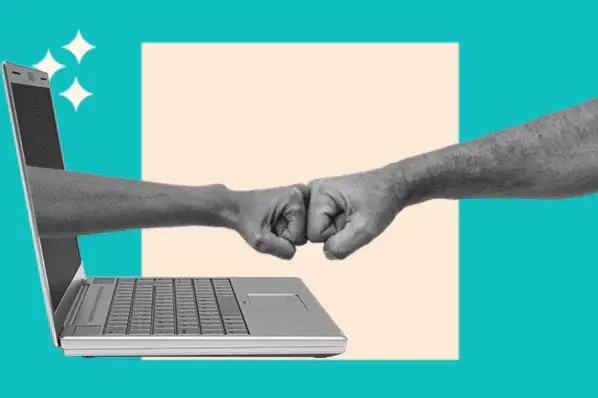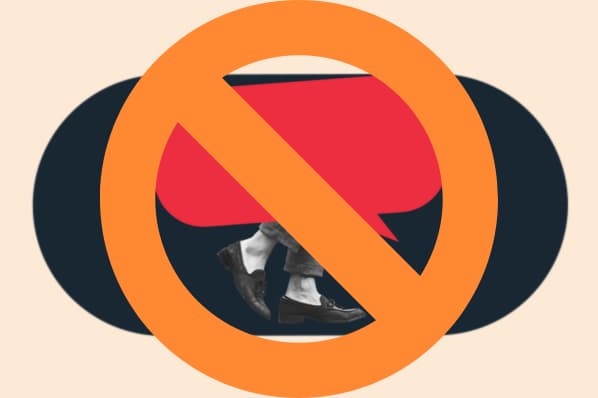8 Negotiation Mistakes You'll Kick Yourself For, According to Experts
1. Not Asking Questions
Edward White, Head of Growth at beehiiv, says, "It‘s a mistake not to ask questions during negotiations that can help you get to the other side. If a lead says your price is too high, look outside your brand and ask them what they’re comparing your prices to. That information can help you understand the research they've done, what holds the most value for them, and whether they have a solid grip on the current market.
“Either way, it helps guide your conversation forward so you can differentiate your brand and prove why the price is right. Plus, it can give you some great intel if they're truly shopping around with different competitors.”
2. Not Listening to Understand and Collaborate
Filip Dimitrijevski, Business Development Manager at CLICKVISION BPO, says, "When people don't listen to one another, conversations tend to go poorly. When you constantly dwell on your own thoughts, it might be challenging to comprehend what another person is trying to convey to you.
"Through attentive listening, I have been able to generate new ideas and understand how they intertwine with one another, which has resulted in conversations that are more fluid.
“Getting the process to move along more quickly is another challenge. Despite the fact that you might be eager to receive a response right away, it is more beneficial to take the time to consider the situation from every angle. If both parties are patient, the negotiation process can become a collaborative effort that benefits everyone involved.”
3. Treating Price as the Only Factor
Branden Baldwin, COO of ViB, says, “Treating price as the only card that matters. Too often, leaders default to negotiating solely on price — thinking it's the only thing the other party cares about. This narrow focus can lead to unnecessary concessions when, in reality, factors like payment terms, added services, or long-term value may carry more weight.”
4. Making Too Many Assumptions
Baldwin also says, "Guessing instead of understanding the other party's needs is another major mistake. Making assumptions about what the other party values — rather than asking the right questions — can derail negotiations before they even begin.
“When you over-index on surface-level information, you risk reducing your credibility and limiting your ability to push back effectively where it matters. Instead, always focus on uncovering deeper motivations to build leverage and drive meaningful outcomes.”
5. Failing to Prepare
Jacqueline Twillie, Leadership Officer at ZeroGap.co, says, "One of the biggest mistakes sales and business leaders can make in a negotiation is failing to prepare thoroughly. Negotiation isn‘t just about the conversation at the table-it’s about the homework you do beforehand.
“This includes knowing your goals, understanding the other party's priorities, and having a clear idea of what success looks like. Without preparation, you risk giving up too much or leaving value on the table.”
6. Not Focusing on Relationship-Building
Justin Landis, Founder of The Justin Landis Group, says, "One of the biggest mistakes sales and business leaders make in negotiations is focusing too much on winning the deal rather than building the relationship. When you're only thinking about squeezing out the best terms for yourself, you often overlook what truly motivates the other party.
“That mindset can sour the dynamic and even jeopardize the deal altogether. Negotiation isn't just about numbers — it's about understanding needs and aligning interests.
"If you don't take the time to listen and find that common ground, you're likely leaving value on the table-not just in this deal, but in future opportunities that could come from a strong, collaborative relationship.”
7. Failing to Keep Your Emotions in Check
Bill Lyons, CEO of Griffin Funding, says, "One common mistake in negotiations is letting emotions take control. Frustration, anger, or ego can cloud judgment, leading to rash decisions that may harm the outcome.
"For instance, responding emotionally to a tough counteroffer might cause you to reject a deal that aligns with your goals. Similarly, allowing ego to drive the discussion can create unnecessary tension, making it difficult to reach a mutually beneficial agreement.
"Emotions can also close your eyes to valuable opportunities for compromise, as you might focus more on ‘winning’ than on achieving a result that works for both sides. This kind of emotional response risks derailing the current negotiation and can strain professional relationships, making future collaborations challenging.
“To avoid this pitfall, it is essential to remain calm and composed, even in high-pressure situations. Taking a moment to step back and refocus on your objectives can help keep emotions in check and foster a more productive dialogue.”
8. Ignoring Emotions
Nitin Chauhan, CEO & Founder of NITSAN, says, "Ignoring emotional factors in negotiations can lead to strained relationships. If emotions aren't acknowledged, it can result in frustration or mistrust, making it harder to reach an agreement.
“Successful negotiations involve understanding and addressing the feelings of all parties, which helps build trust and create solutions that satisfy everyone involved. Emotions play a big role in decision-making, and recognizing this can lead to better outcomes for both sides.”
And there you have it — eight critical errors you can make that can derail an otherwise productive negotiation. Obviously, this list is far from exhaustive, but I still hope that the insight you saw here will help you conduct more thoughtful, effective negotiations that foster lasting professional relationships and lead to more mutually beneficial outcomes.
Sales Negotiation












